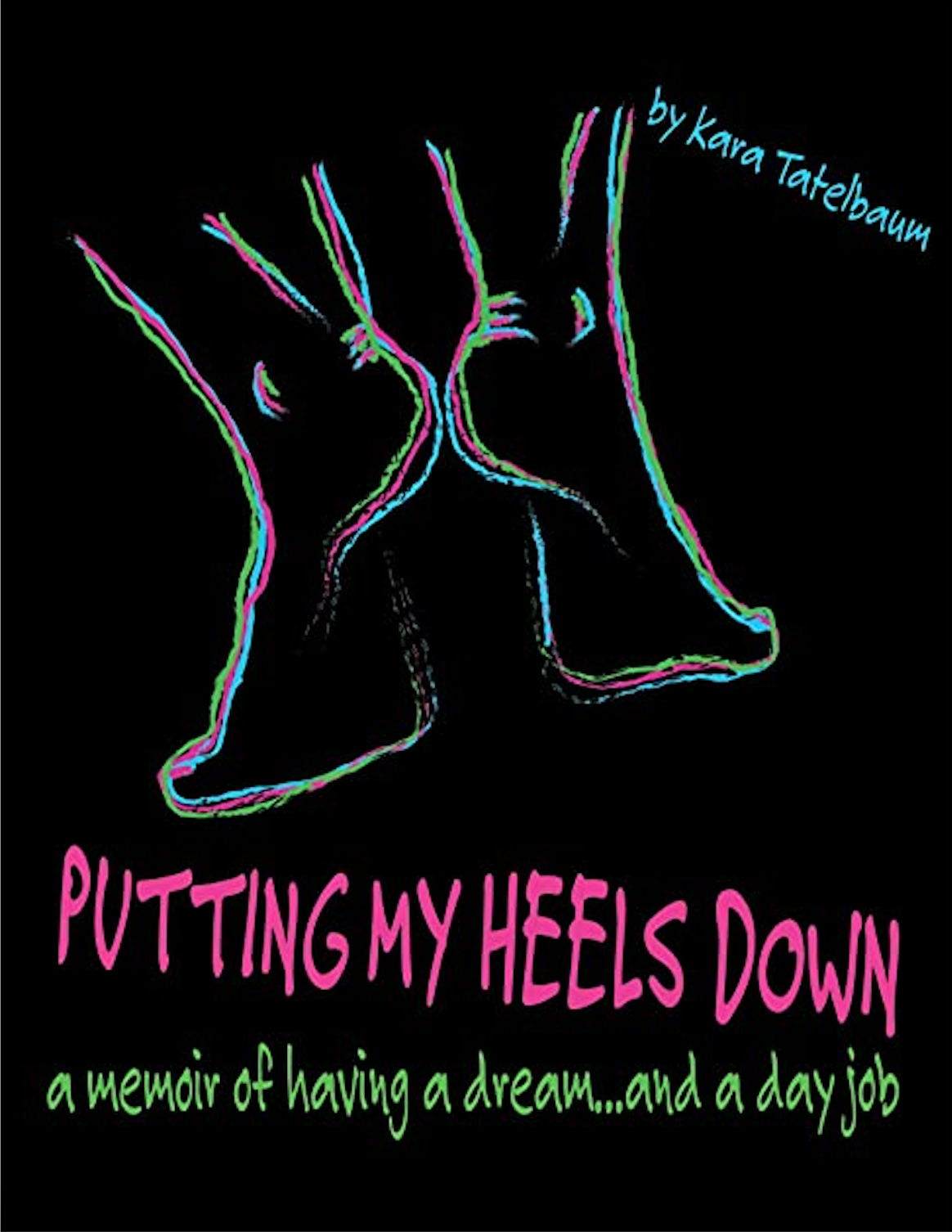Review: Putting My Heels Down: A Memoir of Having a Dream and a Day Job by Kara Tatelbaum
Reviewed by Rachel Luck
Kara Tatelbaum’s memoir, Putting My Heels Down: A Memoir of Having a Dream and a Day Job, travels along her arduous journey as a ballet and modern dancer. In a linear collection of chapters, Tatelbaum illustrates major points in her life that force her to confront issues with her body’s physical setbacks, obstacles in college, and her struggles for career recognition. The same burst of energy that comes through in modern dance during Tatelbaum’s choreography comes through in her writing as a witty, starry-eyed, frustrated dreamer. Readers will wish they had someone like Tatelbaum in their circle of girlfriends. Tatelbaum is a resilience coach and the writer of Lazy Girl Pilates.
Not every dreamer has true grit like Tatelbaum does. Even so, the universe seems to push back just as hard as she works. Much of Putting My Heels Down is about her relationship with dance, but it’s also about the relationship she has with her body. The first chapter, “The Hundred – 2011,” opens with her taking slow steps up the stairs of a Manhattan subway per her physical therapist’s instructions. When she arrives to instruct her usual fitness class, she pops her hips back into place in front of her students. She says, “They look at me funny, probably expecting a more flexible instructor moving with ease instead of a tightly wound musical instrument of pops and snaps standing before them.” Though there isn’t a single word or diagnosis that Tatelbaum presents to her readers, her legs, tight tendons, and slow-healing body kindle chronic pain through her life like a slow burning fire—one that occasionally roars like a furnace and threatens to consume her aspirations.
As a dancer, Tatelbaum is often forced to work with her body in ways that benefit her and highlight what she can do. Cleverly, she masters the movement of her arms to distract from her inability to maintain traditional ballet technique with her legs. At times, she is unable to move her legs at all in dances, per doctor’s orders, and her upper body becomes the entire focus of her art. Tatelbaum finds ways to take control of her own narrative as a choreographer and a writer. She’s a storyteller able to portray powerful emotions with the mind as well as the body.
I imagine that reading Tatelbaum’s memoir is similar to watching her dance solos—like visualizing the many facets of her personality in each routine. Likewise, a friend of hers observed the intimacy of her solos. Tatelbaum says:
“My friend and lighting designer, Josh, once described my solos as ‘like peeking into your personal journal.’ Rehearsing Girlfriend, Grounded, and Desiderata forced me to revisit my diary as a twenty-year-old unlucky in love, a dizzied person with feet confined to the floor at twenty-three, and deciding between what I wanted and what I needed at twenty-five.”
I admire artists who attempt self-reflection in multiple artistic forms. With choreography and writing, Tatelbaum is able to adeptly speak the story of herself in two different languages. Passion for life and belief in one’s art exudes a kind of charisma that’s powerfully irresistible.
Even in the face of dance instructors who told her as a child that she would never be a dancer because she didn’t “have the body” for it (they really said that!), she didn’t back down. In her young adulthood, a physical therapist told her, “‘You have the body of a ninety-year-old woman, not a dancer.’” As her body tore and ached beyond what any other dancers were feeling, she persisted. Some might call Tatelbaum’s desire to become a dancer an obsession, some might call it for what it truly is: love. Some of us aren’t so lucky in finding love in this way, but those of us who have found it, Tatelbaum would argue, have found something worth pursuing.
Dan Van Note, host of the podcast Dan Talks, recently interviewed Tatelbaum about her memoir and what she’s learned as a wellness and resilience coach. She responded, “Resilience is not just about ‘bouncing back.’ Resilience is about building up. . . . Our resilience is a muscle that we build constantly.” With this, inner strength can be learned and practiced. Anyone who reads Tatelbaum’s memoir and aspires to have her resilience can and will become stronger with time and determination.
This memoir will appeal to anyone with a dream and will particularly strike a chord with those who feel physically at odds with their own bodies. They may recognize the same platitudes that they hear each day in the voices of Tatelbaum’s loved ones who tell her to do her best. The thing is, she is always doing her best to the point where her body can’t take any more damage.
For Tatelbaum, it’s a difficult road to self-acceptance. Her therapist wisely explains, “‘Your identity will always be as a dancer and choreographer whether you’re currently dancing or not. The journey now is to figure out who else you want to be.’”
How can hard work, best efforts, and passion be measured? Who deserves things more or less than another person? Tatelbaum is trying to teach us that it’s not about getting what you deserve. Perhaps it’s about continuing to move toward a dream in any way we can while treating ourselves with kindness during the process.
Rachel Luck is an emerging nonfiction writer, poet, and graduate student from Omaha, Nebraska, pursuing her MA. She enjoys her job as a Teaching Artist in the Nebraska Writers Collective, bringing the art of slam poetry into high school classrooms.

